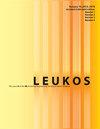Study of Heart Rate and Blood Pressure Subject to Pulsed LED Lighting
IF 2.6
2区 工程技术
Q2 CONSTRUCTION & BUILDING TECHNOLOGY
引用次数: 0
Abstract
ABSTRACT It has been proved that lighting has nonvisual effects on the human body, including changes in heart rate and blood pressure. Heart rate and blood pressure are associated with the autonomic nervous system and can indicate stress level. The present study investigates whether heart rate and blood pressure are influenced by the frequency or duty cycle of pulsed light, together with the duration of lighting. Twelve healthy young subjects were recruited for the investigation. Subjects were exposed to pulsed light of varying frequencies (40 Hz, 100 Hz, 300 Hz) and duty cycles (10%, 50%, 90%). Exposure time was divided into two groups: short-time (20 min) and long-time (3 hours). Heart rate and blood pressure were measured during the experiments. Results showed that after a short lighting period (20 min), heart rate and blood pressure were significantly higher under 40 Hz pulsed than that under stable light, while 100 Hz and 300 Hz had no significant difference. After 3 hours of exposure time, the two indices became higher under 100 Hz (no flicker perceived with eyes) with 10% duty cycle, while 50% and 90% duty cycle showed no significant difference. These findings indicate that pulsed light will cause a deviation of heart rate and blood pressure from that under stable light.脉冲LED照明下心率和血压的研究
已经证明,照明对人体有非视觉影响,包括心率和血压的变化。心率和血压与自主神经系统有关,可以表明压力水平。本研究调查了心率和血压是否受到脉冲光的频率或占空比以及照明时间的影响。选取12名健康青年受试者进行调查。受试者暴露于不同频率(40 Hz, 100 Hz, 300 Hz)和占空比(10%,50%,90%)的脉冲光下。暴露时间分为短时间组(20 min)和长时间组(3 h)。在实验过程中测量心率和血压。结果表明,短时间光照(20 min)后,40 Hz脉冲下的心率和血压显著高于稳定光照下的心率和血压,而100 Hz和300 Hz无显著差异。在占空比为10%的100hz(眼睛感觉不到闪烁)条件下,两项指标在3小时后均有所提高,而50%和90%的占空比无显著差异。这些发现表明,脉冲光会导致心率和血压偏离稳定光下的心率和血压。
本文章由计算机程序翻译,如有差异,请以英文原文为准。
求助全文
约1分钟内获得全文
求助全文
来源期刊

Leukos
工程技术-光学
CiteScore
7.60
自引率
5.60%
发文量
19
审稿时长
>12 weeks
期刊介绍:
The Illuminating Engineering Society of North America and our publisher Taylor & Francis make every effort to ensure the accuracy of all the information (the "Content") contained in our publications. However, The Illuminating Engineering Society of North America and our publisher Taylor & Francis, our agents, and our licensors make no representations or warranties whatsoever as to the accuracy, completeness, or suitability for any purpose of the Content. Any opinions and views expressed in this publication are the opinions and views of the authors, and are not the views of or endorsed by The Illuminating Engineering Society of North America and our publisher Taylor & Francis. The accuracy of the Content should not be relied upon and should be independently verified with primary sources of information. The Illuminating Engineering Society of North America and our publisher Taylor & Francis shall not be liable for any losses, actions, claims, proceedings, demands, costs, expenses, damages, and other liabilities whatsoever or howsoever caused arising directly or indirectly in connection with, in relation to, or arising out of the use of the Content. Terms & Conditions of access and use can be found at http://www.tandfonline.com/page/terms-and-conditions .
 求助内容:
求助内容: 应助结果提醒方式:
应助结果提醒方式:


